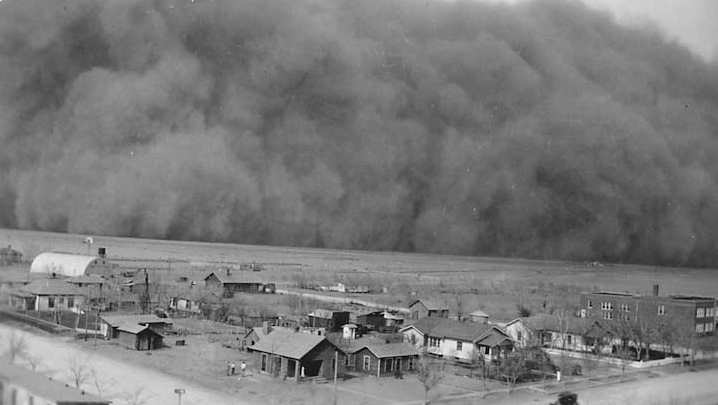nordic-circus.org – The Dust Bowl was one of the most devastating environmental disasters in American history, impacting the Great Plains during the 1930s. This period of severe dust storms and drought had profound effects on agriculture, the economy, and the lives of those who lived through it. By examining the causes and consequences of the Dust Bowl, we can glean important lessons for managing our natural resources and preventing similar catastrophes in the future.
Causes of the Dust Bowl
The Dust Bowl was primarily caused by a combination of natural and human factors. Prolonged drought conditions in the Great Plains were exacerbated by poor agricultural practices. Farmers, eager to capitalize on high wheat prices during World War I, plowed vast expanses of prairie land. This intensive farming removed the native grasses that anchored the soil, leaving it vulnerable to erosion. Without these grasses to hold the soil in place, high winds easily swept the dry topsoil into massive dust storms, known as “black blizzards.”
Impact on People and Agriculture
The impact of the Dust Bowl on the population was catastrophic. Millions of people were displaced from their homes as farms became uninhabitable and unprofitable. Many migrated westward to states like California in search of work and better living conditions. The agricultural economy of the region collapsed, leading to widespread poverty and hardship. The federal government responded with New Deal programs aimed at relief and recovery, but the social and economic scars of the Dust Bowl lingered for years.
Environmental and Economic Lessons
One of the key lessons from the Dust Bowl is the importance of sustainable land management practices. The disaster highlighted the need for soil conservation techniques, such as crop rotation, contour plowing, and the planting of windbreaks, to prevent erosion and maintain soil health. These practices have since been integrated into modern agriculture to promote sustainability and resilience against climatic extremes.
Economically, the Dust Bowl underscored the dangers of over-reliance on a single crop and the importance of diversifying agricultural production. By promoting crop diversity and sustainable farming methods, we can reduce the risk of similar environmental and economic crises in the future.
Modern Implications and Climate Change
Today, the lessons from the Dust Bowl are particularly relevant as we face new environmental challenges due to climate change. Increasingly erratic weather patterns, including droughts and extreme weather events, pose significant risks to global agriculture and food security. By applying the lessons of the past, we can better prepare for and mitigate the impacts of climate change on our agricultural systems.
Conclusion
The Dust Bowl remains a poignant reminder of the interconnectedness between human activities and the environment. By learning from history, we can develop more resilient agricultural practices and policies that protect both our natural resources and communities. In doing so, we not only honor the legacy of those who endured the Dust Bowl but also safeguard the future for generations to come.
